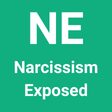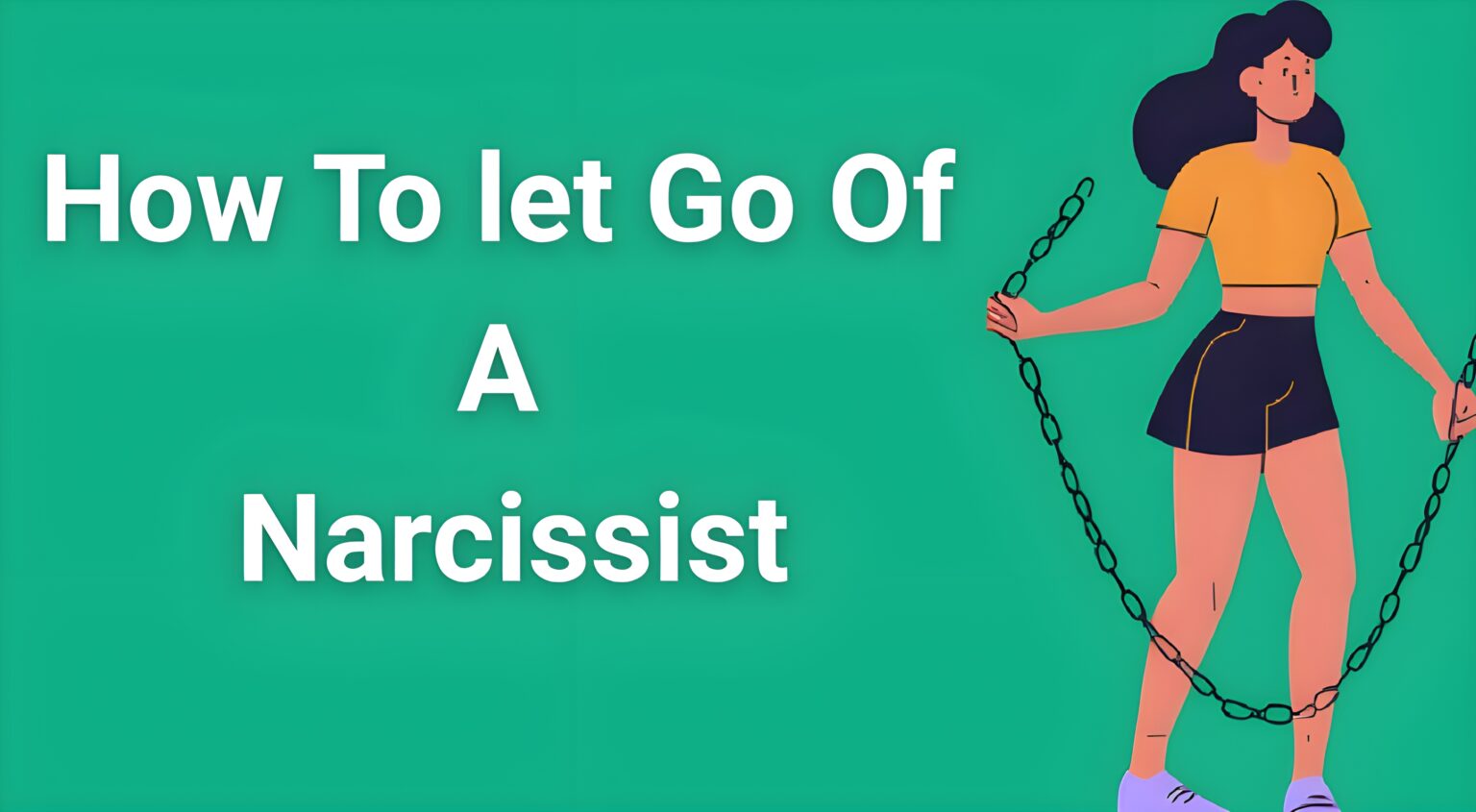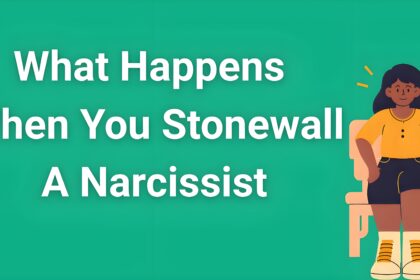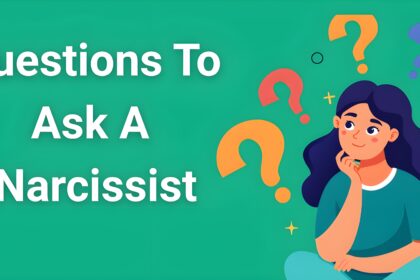If you’re reading this, you’re probably asking yourself the same devastating question that thousands of others have asked: “How do I let go of a narcissist when every part of me feels addicted to them?” Learning how to let go of a narcissist isn’t just about ending a relationship—it’s about breaking free from a psychological prison that feels more real than any physical chain.
The person who has been controlling your mind, manipulating your emotions, and making you question your own reality has created something far more powerful than love. They’ve created a trauma bond, a neurological addiction that makes leaving feel impossible, even when you know staying is destroying you.
But here’s what I want you to understand from the very beginning of this journey: what you’re experiencing is not weakness, it’s biochemistry. And just like any other addiction, there are proven, scientific ways to break free and reclaim your life.
Why You Can’t Just “Get Over” a Narcissist
Before we dive into the step-by-step process of how to let go of a narcissist, you need to understand exactly what you’re fighting against. This isn’t a normal breakup where time and distance naturally heal the wounds. This is a battle against your own brain chemistry.
The Science Behind Trauma Bonding
When you’re in a relationship with a narcissist, your brain gets trapped in what trauma specialists call “intermittent reinforcement.” Think of it like a slot machine that occasionally pays out—the unpredictable rewards create the strongest form of psychological addiction known to science.
The narcissist alternates between:
- Love bombing (intense affection and attention)
- Devaluation (criticism, coldness, emotional abuse)
- Hoovering (sucking you back in with promises and false hope)
This cycle triggers massive releases of dopamine (the addiction chemical) followed by painful withdrawals. Your brain literally believes you need this person to survive, even when your logical mind knows they’re toxic.
Why Trauma Bonds Feel Stronger Than Love
Trauma BondingTraditional relationships build on mutual respect, trust, and consistent care. Trauma bonds are built on survival. When someone alternates between being your source of pain and your source of relief, your nervous system gets confused and attaches to them as both the problem and the solution.
This is why you might find yourself:
- Checking their social media obsessively
- Making excuses for their behavior to friends and family
- Feeling physically ill when you try to stay away
- Believing you “can’t live without them”
- Feeling like you’ll never find anyone who understands you like they do
These aren’t character flaws—these are trauma responses. And understanding this is the first step in learning how to let go of a narcissist permanently.
The Complete Step-by-Step Guide: How to Let Go of a Narcissist
Now that you understand what you’re dealing with, let’s walk through the proven process for breaking free. Remember, this isn’t about willpower—it’s about rewiring your brain and rebuilding your life systematically.
Step 1: Accept the Reality of What You’re Facing
The first and most crucial step in learning how to let go of a narcissist is radical acceptance. This means:
Accepting that they will not change. No amount of love, patience, or perfect behavior on your part will transform them into the person you need them to be. The glimpses of kindness you’ve seen aren’t the “real them” underneath—they’re tools of manipulation.
Accepting that this is abuse. Even if they’ve never hit you, even if they can be charming, even if others think they’re wonderful—emotional manipulation, gaslighting, and psychological control are forms of abuse.
Accepting that you’ve been trauma bonded. This isn’t about being weak or stupid. Trauma bonding can happen to anyone, and it’s a testament to your capacity for love and loyalty—qualities they exploited.
Write down these three acceptances and read them whenever you feel yourself doubting your decision to leave.
Step 2: Create an Emergency Response Plan
Before you can successfully implement how to let go of a narcissist, you need to prepare for the moments when the addiction kicks in hardest. Your brain will fight you on this decision, especially in the first few weeks.
Create your 3 AM Protocol:
- Write a list of 5 activities you can do immediately when you feel the urge to contact them
- Save the number for a crisis helpline in your phone
- Have a trusted friend you can call or text at any hour
- Keep a journal by your bed to write out your feelings instead of reaching out
Prepare for Hoovering Attempts: Narcissists don’t accept rejection easily. When they realize you’re serious about leaving, they’ll likely try to “hoover” you back in with:
- Promises to change
- Apologies and tears
- Threats of self-harm
- Love letters or grand gestures
- Using mutual friends or family as messengers
Knowing these tactics are coming makes you less likely to fall for them.
Step 3: Implement Strategic No Contact
Going no contact is the most effective method for how to let go of a narcissist, but it needs to be done strategically, not impulsively.
Block them everywhere:
- Phone number and text messages
- All social media accounts
- Email addresses
- Professional platforms like LinkedIn
Set up protective barriers:
- Change your routines to avoid places you might see them
- Ask mutual friends not to share information about you
- Consider temporarily staying elsewhere if you live together
- Document any attempts at contact for potential legal action
Handle unavoidable contact (children, work, legal matters): If you must maintain some contact, use the “gray rock” method—become as uninteresting and unresponsive as possible. Keep interactions brief, factual, and emotionless.
Step 4: Detox Your Environment and Digital Life
Learning how to let go of a narcissist requires removing all triggers that keep the trauma bond active.
Physical environment cleanup:
- Remove or store items that remind you of them
- Rearrange your living space to feel fresh and new
- Create new routines that don’t include them
- Reclaim spaces that were “yours” in the relationship
Digital detox:
- Delete photos and videos from your devices
- Unfollow their friends and family on social media
- Clear your browser history of sites you visited together
- Remove their streaming accounts and shared digital services
This isn’t about erasing the relationship—it’s about removing the constant triggers that keep your brain stuck in the addiction cycle.
Step 5: Rebuild Your Identity and Support System
Narcissists systematically isolate their victims and erode their sense of self. Part of how to let go of a narcissist involves reconstructing who you are outside of their influence.
Reconnect with your pre-relationship self:
- Make a list of interests and hobbies you abandoned
- Reach out to friends you lost touch with
- Return to activities that brought you joy
- Remember your dreams and goals that got sidelined
Build a strong support network:
- Be honest with trusted friends and family about what you experienced
- Consider joining a support group for narcissistic abuse survivors
- Find a therapist who specializes in trauma and abuse recovery
- Surround yourself with people who affirm your worth and sanity
Professional support can be particularly valuable during this process. Many survivors find that having expert guidance helps them understand their experience and develop personalized strategies for healing.
Step 6: Process the Grief and Trauma
Understanding how to let go of a narcissist includes accepting that you’re not just ending a relationship—you’re grieving multiple losses simultaneously.
You’re grieving:
- The person you thought they were
- The future you imagined together
- Your sense of reality and trust in your own perceptions
- Time and energy that was wasted
- The version of yourself that existed before the abuse
Healthy grief processing includes:
- Allowing yourself to feel the pain without trying to fix it by going back
- Journaling about your experiences to process the confusion
- Talking through your feelings with supportive people
- Engaging in physical activities that help move trauma out of your body
- Being patient with yourself as healing happens in waves, not straight lines
Step 7: Reprogram Your Thought Patterns
The narcissist has spent months or years programming you to think in ways that serve them. Learning how to let go of a narcissist means systematically undoing this mental conditioning.
Challenge trauma bond thoughts:
- “I can’t live without them” becomes “I lived before them and I’ll thrive after them”
- “They need me” becomes “They need control, not love”
- “I’ll never find anyone like them” becomes “I’ll never accept treatment like this again”
- “Maybe I was the problem” becomes “Abuse is never the victim’s fault”
Practice daily affirmations: Create a list of truths to read every morning that counteract their programming:
- “I deserve to be treated with respect and kindness”
- “My feelings and perceptions are valid”
- “I am worthy of genuine love”
- “I have the strength to build a better life”
Step 8: Focus on Future Prevention
The final step in how to let go of a narcissist is ensuring you never end up in this situation again. This involves developing red flag awareness and strong boundaries.
Learn to recognize early warning signs:
- Love bombing and rushing the relationship
- Isolating you from friends and family
- Making you question your own memory or perceptions
- Expecting you to prioritize their needs above everything else
- Punishing you with silent treatment or rage when you set boundaries
Develop unshakeable boundaries:
- Know your non-negotiables in relationships
- Practice saying no without elaborate explanations
- Trust your gut feelings about people
- Maintain your independence and outside relationships
- Never compromise your core values for anyone
For many survivors, working through a structured recovery program helps solidify these lessons and provides ongoing support as they rebuild their lives.
Safety Considerations: When Leaving Gets Dangerous
Learning how to let go of a narcissist can sometimes trigger dangerous behavior from the abuser. If you’re concerned about your safety, please take these steps:
Immediate safety planning:
- Keep important documents in a safe place they can’t access
- Have a bag packed with essentials stored somewhere safe
- Identify safe places you can go quickly if needed
- Tell trusted people about your situation
- Keep evidence of abuse (texts, emails, photos)
Warning signs of escalation:
- Threats of violence or self-harm
- Stalking behavior
- Substance abuse
- History of violence with others
- Extreme possessiveness or obsession
Building Your New Life: What Comes After
Once you’ve successfully learned how to let go of a narcissist, the real work of rebuilding begins. This is often the most exciting part of the journey, even though it can feel overwhelming at first.
Rediscovering yourself: Without someone constantly undermining your confidence and controlling your choices, you’ll start to remember who you really are. This process takes time, so be patient with yourself as you explore new interests, reconnect with old friends, and make decisions based on what YOU want, not what someone else expects.
Healing your nervous system: Trauma lives in the body, and part of recovery involves helping your nervous system learn to feel safe again. This might include therapy, meditation, yoga, exercise, or other somatic practices that help you reconnect with your body in positive ways.
Creating healthy relationships: As you heal, you’ll find yourself naturally attracting healthier people into your life. You’ll also become better at recognizing and avoiding toxic patterns before they take hold.
Many survivors find that having structured support during this rebuilding phase makes the process more effective and less lonely. Whether through professional guidance, support groups, or specialized recovery programs, connecting with others who understand your experience can accelerate your healing.
Frequently Asked Questions
How long does it take to get over a narcissist?
Recovery from narcissistic abuse is highly individual, but most people notice significant improvement within 3-6 months of implementing no contact and trauma recovery work. Complete healing can take 1-2 years or more, depending on the length and severity of the abuse. Remember, healing isn’t linear—you’ll have good days and bad days.
What if we have children together?
Having children with a narcissist complicates the process of letting go, but it’s still possible to heal while maintaining necessary contact. Use “parallel parenting” instead of co-parenting, communicate only through text or email about child-related matters, and work with a family law attorney familiar with narcissistic abuse to establish clear boundaries and protections.
Why do I still miss them even though they hurt me?
Missing someone who hurt you is a normal part of trauma bonding. Your brain formed an attachment based on survival, not healthy love. The intermittent reinforcement they provided created genuine neurochemical addiction. These feelings will fade as you break the trauma bond through no contact and recovery work.
How do I explain this to friends and family who don’t understand?
Many people struggle to understand narcissistic abuse because it’s not visible like physical abuse. Share educational resources, be patient with their learning process, and prioritize relationships with people who believe and support you. You’re not obligated to convince anyone of your reality.
Will they ever change?
Narcissistic personality disorder is a deeply ingrained pattern that rarely changes, even with professional help. While some people with narcissistic traits can improve with intensive therapy, waiting for change will keep you trapped. Focus on your own healing and assume they will remain as they are.
How do I trust my judgment in future relationships?
Rebuilding trust in yourself takes time and often benefits from professional support. Start by trusting yourself in small, low-stakes situations and gradually work up to bigger decisions. Learn about healthy relationship patterns, take new relationships slowly, and maintain your independence and outside support system.
What if I’ve tried to leave before and failed?
Most survivors attempt to leave multiple times before succeeding permanently. Each attempt is not a failure—it’s gathering information and building strength. The difference this time is having a complete understanding of trauma bonding and a systematic approach to breaking free.
Is it normal to feel guilty about leaving?
Guilt is extremely common and is often the result of emotional manipulation. Remember that leaving an abusive situation is an act of self-preservation, not selfishness. You’re not responsible for their emotions or reactions to your decision to prioritize your wellbeing.
Your Freedom Starts Now
Learning how to let go of a narcissist is one of the most challenging but rewarding journeys you’ll ever undertake. It requires courage, persistence, and often professional support, but thousands of survivors have successfully broken free and rebuilt their lives.
Remember these key truths as you move forward:
You are not responsible for their behavior or emotions. You cannot love someone into changing. Your perceptions and feelings are valid. You deserve to be treated with respect and kindness. Healing is possible, and you have the strength to create the life you deserve.
The trauma bond that feels so overwhelming right now will weaken and eventually break as you consistently apply these steps. Your brain will remember how to feel safe, how to trust your own judgment, and how to form healthy attachments with people who truly care about your wellbeing.
If you’re feeling overwhelmed by this process or need additional support, remember that specialized help is available. Many survivors find that having expert guidance tailored to their specific situation accelerates their healing and provides the clarity they need to stay strong during difficult moments.
Your freedom doesn’t just happen overnight—it’s built one brave decision at a time. And right now, by seeking information about how to let go of a narcissist, you’ve already taken the most important step. You’ve chosen yourself over someone who never chose you.
The person you’re meant to become is waiting on the other side of this healing journey. She’s stronger, wiser, and more compassionate than you can imagine right now. And she’s absolutely worth fighting for.
Your new life begins the moment you decide you deserve better. That moment is now.






